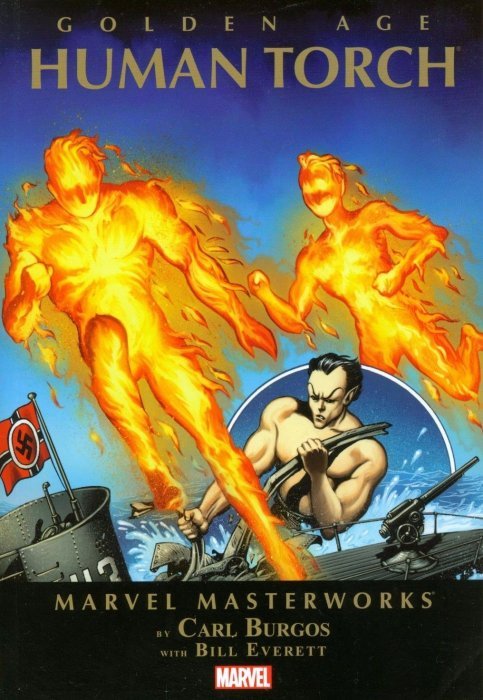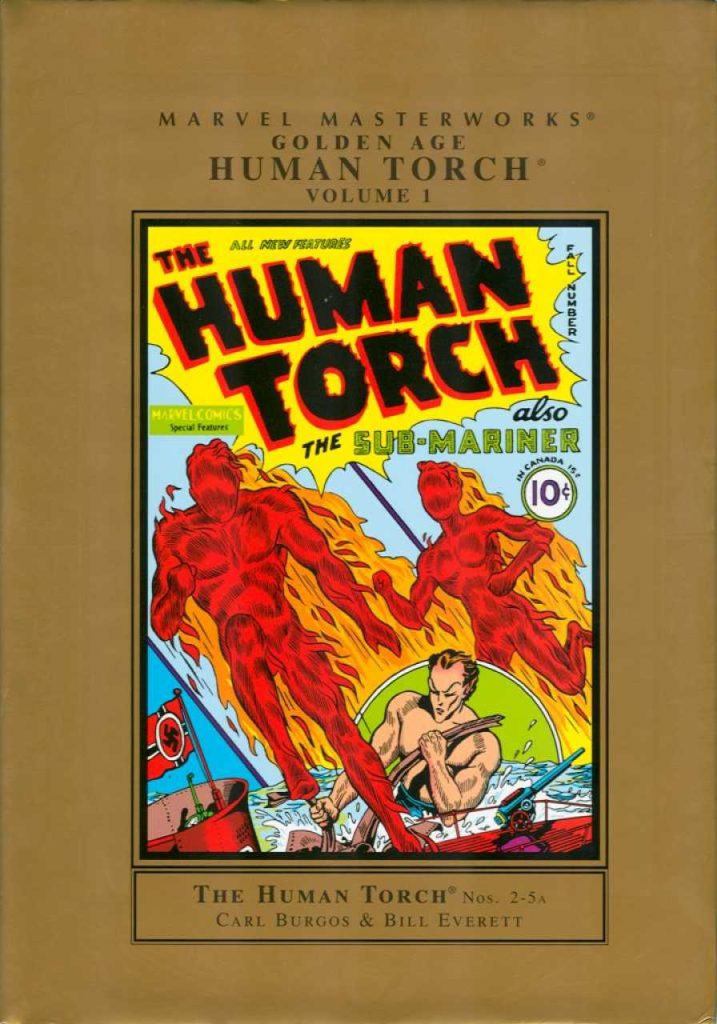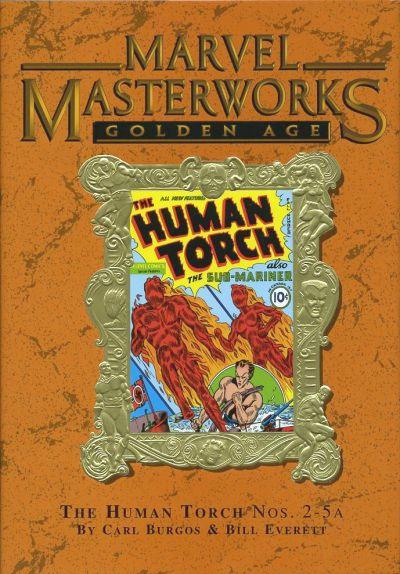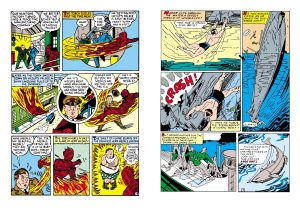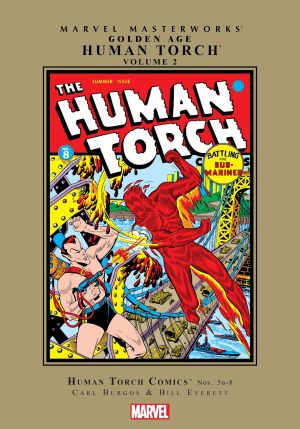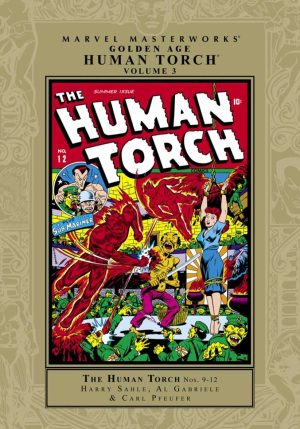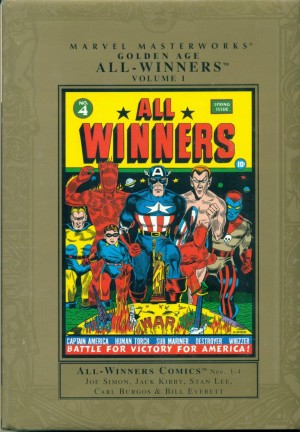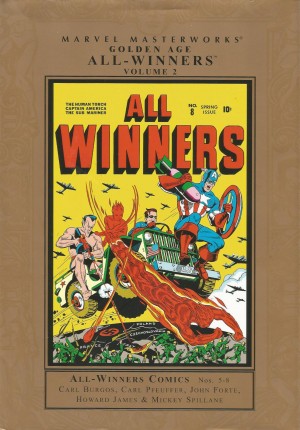Review by Frank Plowright
Today the Human Torch is best known as Johnny Storm, member of the Fantastic Four, but when Stan Lee and Jack Kirby used the character in 1961 they were reviving a 1940s hero. In his original incarnation as created by Carl Burgos, the Human Torch is seen melting his way through a wall on the cover of what’s considered the first Marvel comic, this version an artificial being created in a laboratory.
While being one of Marvel’s earliest heroes rapidly earned the Human Torch his own title, the format of choice in 1940 was the anthology and to begin with he was merely the lead feature, backed up by other characters. All Marvel Masterworks volumes are archival presentations, but this is more so than those presenting comics from the 1960s onward, and given the rarity and expense of the original comics it’s pleasing to see all back-up features included. In his introduction Roy Thomas explains the likely paucity of Human Torch content in his first issue, while also providing an overview of a world at war, and noting the presence of offensive racial stereotypes.
The storytelling of the 1940s didn’t concern itself with logic or character, as excitement was all that mattered. It accounts for the Human Torch acquiring his sidekick Toro at a carnival, appearing just as he randomly bursts into flame. Whether Burgos was told to include a youngster for kids to identify with, as was the practice for superheroes of the time, or it was his decision is unknown, but the Torch is stuck with Toro from then on.
Burgos isn’t a great artist, but his sensational idea combined with the energy worked for 1940s youngsters. Given the power set, it’s strange how often Burgos will have the Torch using his fists on thugs, with flaming trickery almost a last resort, but then the scripts seem written on a page by page basis. You could sell Toro the Brooklyn Bridge he’s so easily fooled in every story, and at times the Torch doesn’t seem much smarter. The art improves greatly for the collaboration of Harry Sahle, and it’s noticeable the flaming trickery increases also.
The Sub-Mariner back-up strip is better than the lead feature. The young Bill Everett’s actual drawing doesn’t rank greatly better than Burgos at the start, but he improves, applies far more thought to his layouts, and loves the technical aspects of a battleship or plane. His plots also seem to have been constructed with a start, middle and end, and even before the USA became involved in World War II Everett knows where there’s a steady source of villainy for the Sub-Mariner to sort out. Humour is also apparent. Don’t skip the text page of Everett explaining how the Sub-Mariner was created, with Burgos’ about the Human Torch also funny.
Depending on your view, by today’s standards these stories are either crude and primitive or the stepping stones on which the Marvel universe was constructed. Keep your expectations low and there’s fun to be had. Success was undeniable, though, and more follows in Volume 2. Alternatively all the Torch’s 1940s appearances are combined in the Golden Age Human Torch Omnibus.
